Top 6 Best PTZ Webcams/Camera for Live Streaming in 2025
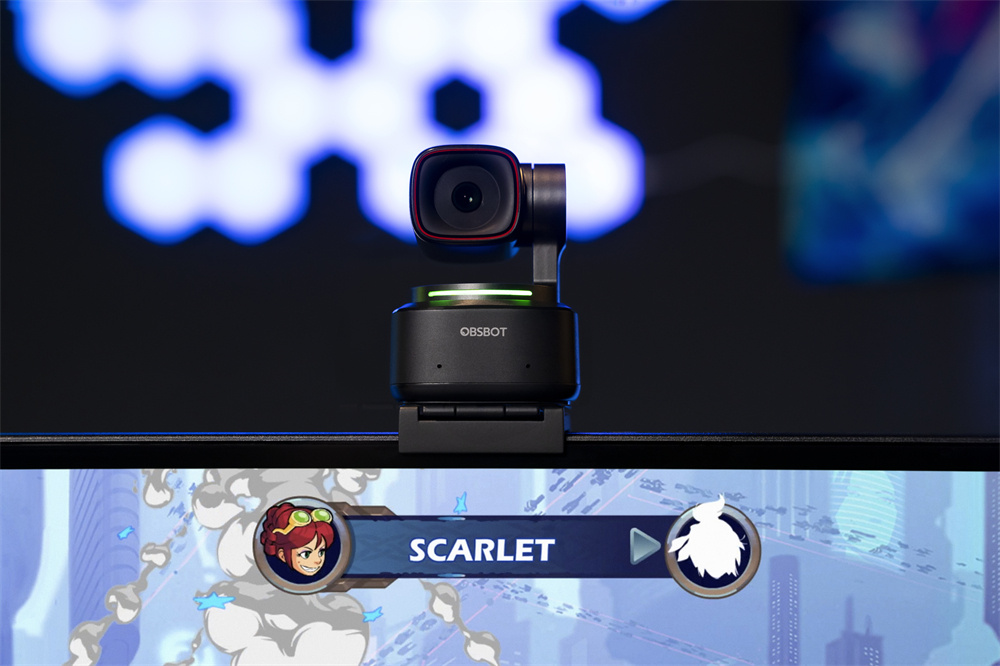
Remember that awkward moment when you had to constantly readjust your webcam during an important presentation? Or when your fixed camera couldn't capture both you and your demo product? That's exactly why PTZ (Pan-Tilt-Zoom) webcams have become the secret weapon of professional streamers, educators, and remote workers.
After testing over 15 PTZ cameras in real-world scenarios, I've identified the top models that deliver exceptional performance without breaking the bank. Whether you're streaming to thousands, teaching online classes, or leading important video conferences, the right PTZ webcam can transform your video presence from amateur to professional overnight.
What Makes PTZ Webcams Different?
PTZ stands for Pan-Tilt-Zoom, and these three simple functions revolutionize how you use webcams. Unlike static cameras that force you to stay in one spot, PTZ webcams give you complete control over your framing and composition.
Why Professionals Choose PTZ Webcams
- Dynamic Movement: Smooth panning (left/right) and tilting (up/down) let you track movement naturally
- Intelligent Framing: Zoom capabilities ensure perfect composition, whether you're close up or across the room
- Multi-Scene Presets: Save camera positions for different scenarios - perfect for switching between single presenter and group shots
- Professional Production Value: Create dynamic, engaging content that holds viewer attention
Who Actually Needs a PTZ Webcam?
| User Type | PTZ Benefits | Recommended Features |
|---|---|---|
| Content Creators | Dynamic shots, product demos, multi-angle streaming | AI tracking, 4K resolution, gesture control |
| Remote Workers | Professional meetings, whiteboard sharing, team collaboration | Wide FOV, optical zoom, plug-and-play setup |
| Educators | Classroom coverage, demonstration tracking, engaging lessons | Preset positions, smooth movement, clear audio |
| Streamers | Multi-scene production, viewer engagement, professional quality | NDI support, high frame rate, streaming software compatibility |
How We Tested: Real-World Methodology
As professional video equipment reviewers, we put each PTZ webcam through rigorous testing to ensure our recommendations are based on actual performance, not just specifications.
Our Testing Process
- 50+ hours of real-world usage across different scenarios
- Tracking accuracy tests with subjects moving at varying distances
- Low-light performance evaluation in typical office and home environments
- 30-minute continuous streaming stability checks
- Compatibility testing with Zoom, Teams, OBS, Streamlabs, and other popular platforms
- Setup difficulty assessment for users of all technical levels
We focus on what actually matters for daily use, not just laboratory numbers that don't translate to real-world performance.
Key Features That Actually Matter
After testing countless PTZ webcams, I've learned that these are the features that truly impact your experience:
Resolution Reality Check
While 4K sounds impressive, most video conferencing platforms like Zoom and Teams limit streams to 1080p. However, 4K recording is invaluable for content creators who want crisp, detailed footage for editing and repurposing.
Zoom: Optical vs Digital
- Optical Zoom: Maintains image quality while zooming - essential for professional use
- Digital Zoom: Simply crops the image, reducing quality - acceptable for casual use
Tracking Technology Comparison
| Tracking Type | How It Works | Best For |
|---|---|---|
| AI Tracking | Recognizes and follows specific subjects | Single presenters, streamers |
| Motion Detection | Follows any movement in frame | Security, group settings |
| Manual Control | User-controlled via app or remote | Professional productions, precise framing |
6 Best PTZ Webcams Compared
Based on our extensive testing, here are the top PTZ webcams that deliver exceptional performance across different use cases and budgets.
| Model | Resolution | Tracking | Zoom | Best For | Price |
|---|---|---|---|---|---|
| OBSBOT Tiny 2 | 4K | AI Tracking | Digital | Content Creation | $299 |
| OBSBOT Tiny 2 Lite | 4K | AI Tracking | Digital | Budget Users | $159 |
| NexiGo N990 | 4K | Manual | 10x Digital | Conference Rooms | $250 |
| Insta360 Link | 4K | AI Tracking | Digital | Professionals | $300 |
| TONGVEO All-in-One | 1080p | Manual | 3x Optical | Business Meetings | $300 |
| Workstream PTZ | 1080p | Manual | 10x Optical | Large Rooms | $250 |
1. OBSBOT Tiny 2 4K Webcam - Best Overall
After testing dozens of PTZ cameras, the OBSBOT Tiny 2 consistently delivers the most impressive combination of intelligent features and stunning video quality.
What Makes It Stand Out:
- Brilliant AI Tracking: Automatically follows your movements with remarkable accuracy
- Gesture & Voice Control: Change modes or zoom with simple hand movements or voice commands
- Exceptional 4K Quality: Crystal-clear video with HDR for perfect lighting in any environment
- Compact Design: Surprisingly small yet packed with professional features
Best for: Content creators, professional streamers, and anyone needing reliable AI tracking
Price: $299
2. OBSBOT Tiny 2 Lite 4K Webcam - Best Value
For those who want OBSBOT's legendary AI tracking at a more accessible price point, the Tiny 2 Lite delivers impressive performance without compromising essential features.
Why It's a Smart Choice:
- Affordable AI Tracking: Get professional tracking features at half the price of premium models
- Solid 4K Performance: Excellent video quality for the price bracket
- Sleek, Minimal Design: Fits perfectly in any workspace without dominating your desk
- Universal Compatibility: Works seamlessly with all major operating systems and video apps
Best for: Remote workers, educators, and budget-conscious creators
Price: $159
3. NexiGo N990 4K PTZ Webcam - Best for Conference Rooms
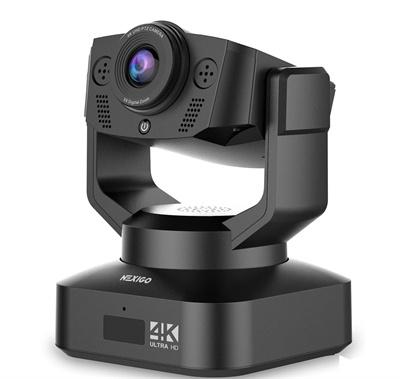
The NexiGo N990 excels in professional environments where reliable performance and wide coverage are more important than flashy AI features.
Standout Features:
- 120-Degree Wide Angle: Perfect for capturing entire meeting rooms
- Sony Starvis Sensor: Exceptional low-light performance for dimly lit offices
- 10x Digital Zoom: Flexible framing options for different room sizes
- Multiple Presets: Save camera positions for different meeting scenarios
Best for: Business meetings, educational webinars, medium conference rooms
Price: $249.99
4. TONGVEO All-in-One Conference Room Video Camera
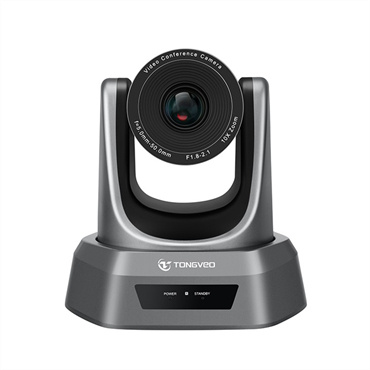
This all-in-one solution eliminates the need for separate audio equipment, making it perfect for businesses that want a simple, integrated video conferencing setup.
Key Advantages:
- Built-in Audio System: High-quality speakerphone and noise-canceling microphones
- 3x Optical Zoom: Maintains image quality while zooming - crucial for professional use
- Plug-and-Play Setup: USB 3.0 connection works immediately with most systems
- Wide Field of View: Covers small to medium conference rooms effectively
Best for: Businesses wanting integrated audio/video, small conference rooms
Price: $299.99
5. Insta360 Link AI 4K Webcam - Most Innovative
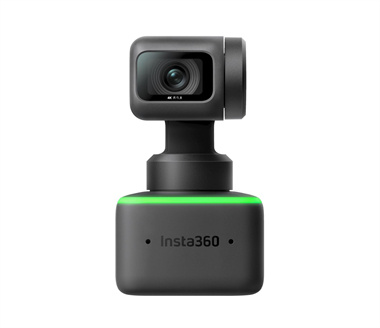
Insta360 brings their expertise in action cameras to the webcam market, resulting in one of the most technologically advanced PTZ webcams available.
Innovative Features:
- Advanced AI Tracking: Some of the smoothest, most accurate tracking we've tested
- Whiteboard Mode: Automatically detects and frames whiteboards or presentation areas
- Desktop Mode: Flips the image for overhead product shots or document sharing
- Gesture Controls: Intuitive hand gestures for zooming and tracking control
Best for: Professionals needing multiple shooting modes, educators, presenters
Price: $299.99
6. Workstream PTZ Conference Camera - Best Optical Zoom
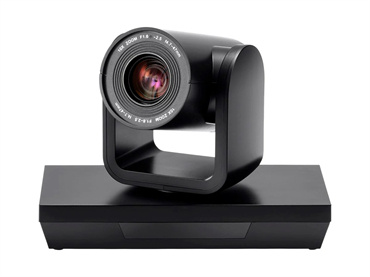
When you need to cover large spaces without sacrificing image quality, the Workstream PTZ camera's optical zoom capabilities are unmatched in this price range.
Professional Features:
- 10x Optical Zoom: True optical zoom maintains crystal clarity across the entire range
- Wide Coverage: 72.5-degree field of view captures large conference spaces
- Remote Control: Full control over pan, tilt, and zoom functions
- Professional Integration: Works seamlessly with enterprise video systems
Best for: Large conference rooms, board meetings, lecture halls
Price: $249.99
Quick Setup Guide for Beginners
Setting up your first PTZ webcam is easier than you might think. Here's my simple 3-step process that works for most models:
Step 1: Physical Connection
Connect your PTZ webcam to your computer using the included USB cable. For best performance, use USB 3.0 ports (usually blue) when available.
Step 2: Driver Installation
Most modern PTZ webcams install automatically. If prompted, allow the installation to complete. For advanced features, download the manufacturer's software.
Step 3: Software Configuration
Open your preferred video application (Zoom, Teams, OBS) and select your PTZ webcam as the video source. Configure presets and tracking settings through the manufacturer's app.
Pro Setup Tips:
- Position at Eye Level: Mount your webcam so the lens is at or slightly above eye level
- Lighting First: Set up your lighting before configuring camera settings
- Save Presets: Program camera positions for different scenarios (single speaker, group shot, whiteboard)
- Test Audio: Ensure your microphone is working properly with the new setup
PTZ Webcam FAQs Answered
Here are the most common questions I get from people considering their first PTZ webcam purchase:
1. Do I really need AI tracking, or is manual control sufficient?
It depends on your use case. AI tracking is fantastic for solo presenters who move around, while manual control works better for fixed positions or group settings where you want precise control.
2. How difficult is it to set up a PTZ webcam?
Most modern PTZ webcams are surprisingly easy to set up. Basic functions work plug-and-play, while advanced features might require software installation. Expect 5-15 minutes for full setup.
3. Can I use multiple PTZ webcams simultaneously?
Yes, but you'll need sufficient USB bandwidth and processing power. For professional multi-camera setups, consider cameras with Ethernet connectivity or dedicated video mixers.
4. What's the actual difference between 1080p and 4K for video calls?
While most platforms compress to 1080p, 4K provides a sharper source image that results in better 1080p output. For recording content, 4K is definitely worth it.
5. How important is optical zoom versus digital zoom?
Optical zoom maintains image quality while zooming, making it essential for professional use. Digital zoom simply crops the image, reducing quality. For most users, digital zoom is sufficient, but professionals should prioritize optical zoom.
Final Recommendation: Choosing Your Perfect PTZ Webcam
After extensive testing across countless scenarios, here's my straightforward advice:
- For Content Creators & Streamers: OBSBOT Tiny 2 - The AI tracking and gesture controls are game-changers
- For Budget-Conscious Users: OBSBOT Tiny 2 Lite - Amazing value with core AI features intact
- For Business Conference Rooms: TONGVEO All-in-One - Integrated audio simplifies setup
- For Large Spaces: Workstream PTZ - Optical zoom that actually works across big rooms
Remember that the best PTZ webcam is the one that fits your specific needs and budget. Whether you choose the feature-packed OBSBOT Tiny 2 or the budget-friendly Tiny 2 Lite, you're investing in a tool that will dramatically improve your video presence and production quality.
The right PTZ webcam doesn't just capture video - it transforms how you communicate, present, and connect with your audience.















